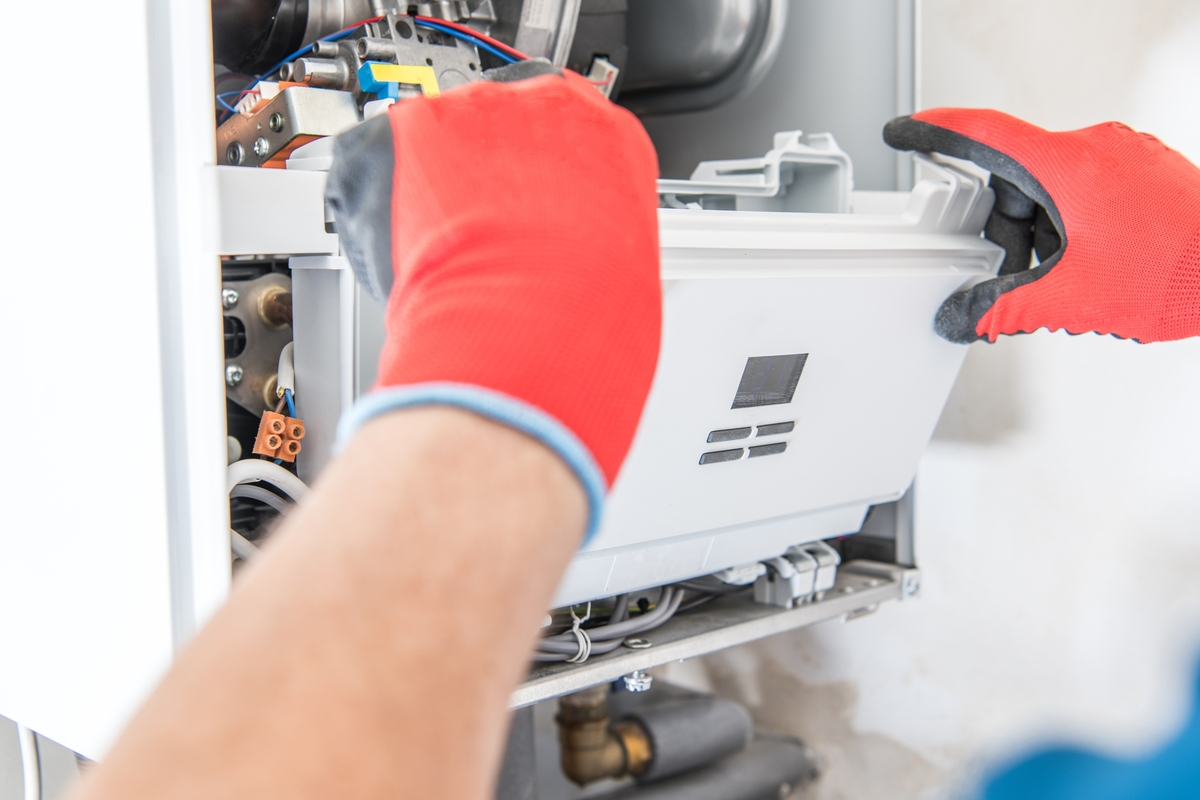How to Clean Gas Furnace: A Step-by-Step Guide

How to Clean Gas Furnace: A Step-by-Step Guide
Maintaining your gas furnace is essential for ensuring its efficiency, safety, and longevity. Regular cleaning can help you avoid costly repairs, reduce energy bills, and ensure that your home remains warm during the colder months. This comprehensive guide will walk you through the steps on how to clean gas furnace components and keep your heating system in top shape.
Understanding Your Gas Furnace
Types of Gas Furnaces
Before diving into the cleaning process, it’s helpful to understand the different types of gas furnaces. The main types include:
- Single-Stage Furnaces: These furnaces have one setting, which is high. They are either on or off, with no middle ground.
- Two-Stage Furnaces: These furnaces have two settings, high and low. They offer more control over heating and can be more efficient.
- Modulating Furnaces: These furnaces adjust the heat output and the speed of the blower in small increments. They provide the most precise temperature control and highest efficiency.
Components of a Gas Furnace
A gas furnace comprises several key components that require regular cleaning. These include:
- Burner: Where the gas is ignited to produce heat.
- Blower: Distributes the heated air throughout your home.
- Filter: Captures dust and debris to keep the air clean.
- Flame Sensor: Ensures the burner is operating correctly by detecting the presence of a flame.
Safety Precautions
Before you begin to clean your gas furnace, it’s crucial to follow these safety precautions:
Turn Off the Power
Always start by turning off the power supply to your furnace. This prevents any electrical accidents while you’re working on the unit.
Turn Off the Gas Supply
Next, turn off the gas supply to your furnace. This step is critical to avoid any potential gas leaks or accidents.
Gather Necessary Tools
Prepare all the tools and materials you’ll need for the job. Common tools include a vacuum, brush, screwdriver, and cleaning cloths.
Step-by-Step Cleaning Guide
Cleaning the Exterior
Wipe Down the Outer Surfaces:
- Use a damp cloth to wipe the exterior surfaces of the furnace. This helps remove any dust or dirt that has accumulated.
Check for Visible Signs of Damage:
- Inspect the exterior for any signs of wear, rust, or damage. If you notice anything unusual, it might be time to call a professional.
Cleaning the Burner
Remove the Burner Assembly:
- Locate the burner assembly and remove it carefully. Refer to your furnace’s manual for specific instructions.
Clean the Burner Ports:
- Use a brush or vacuum to clean the burner ports. Ensure that all dust and debris are removed to allow for proper gas flow and combustion.
Inspect for Rust or Corrosion:
- Check the burner for any signs of rust or corrosion. If you find significant damage, it might be necessary to replace the burner.
Cleaning the Blower
Access the Blower Assembly:
- Open the access panel to reach the blower assembly. This is typically located near the bottom of the furnace.
Vacuum Dust and Debris:
- Use a vacuum to remove dust and debris from the blower and surrounding areas. Be thorough to ensure all particles are cleared.
Wipe the Blower Blades:
- With a damp cloth, wipe down the blower blades. This helps maintain optimal airflow and efficiency.
Cleaning the Filter
Locate the Furnace Filter:
- Find the furnace filter, which is usually near the air intake or blower compartment.
Remove and Inspect the Filter:
- Take out the filter and inspect it for dirt and debris. A dirty filter can significantly reduce the efficiency of your furnace.
Clean or Replace the Filter:
- If the filter is reusable, clean it according to the manufacturer’s instructions. If it’s disposable, replace it with a new one.
Cleaning the Flame Sensor
Locate the Flame Sensor:
- The flame sensor is a small metal rod located near the burner. Refer to your furnace’s manual for its exact location.
Clean the Sensor:
- Use fine-grit sandpaper or an emery cloth to gently clean the flame sensor. Remove any buildup that could interfere with its function.
Reinstall the Flame Sensor:
- Once clean, reinstall the flame sensor in its original position.
Reassembling and Testing
Reassemble the Furnace
After cleaning all components, carefully reassemble the furnace. Ensure all parts are securely in place and that no screws or panels are left loose.
Restore Power and Gas Supply
Turn the power and gas supply back on. Double-check that everything is correctly reconnected and secure.
Test the Furnace
Turn on the furnace to test its operation. Listen for any unusual noises and check that the unit is heating properly. If everything seems normal, you’ve successfully completed the cleaning process.
Maintenance Tips
Regular Inspection
Perform regular inspections of your furnace to catch any potential issues early. This includes checking for wear and tear and ensuring that all components are functioning correctly.
Professional Maintenance
Even with regular cleaning, it’s essential to have HVAC professionals inspect and service your furnace annually. They can identify and address any issues that may not be visible to the untrained eye.
Troubleshooting Common Issues
Be aware of common furnace issues, such as strange noises, irregular heating, or frequent cycling. If you notice any of these problems, it might indicate a need for further maintenance or professional repair.
FAQs: How to Clean Gas Furnace
How often should I clean my gas furnace?
You should clean your gas furnace at least once a year, ideally before the heating season begins. Regular maintenance can help ensure your furnace operates efficiently and safely.
Can I clean my gas furnace myself, or should I hire a professional?
While you can clean your gas furnace yourself by following the steps outlined in this guide, it’s also a good idea to have a professional perform an annual inspection and maintenance. Professionals can catch issues that you might miss and ensure that your furnace is in top working condition.











